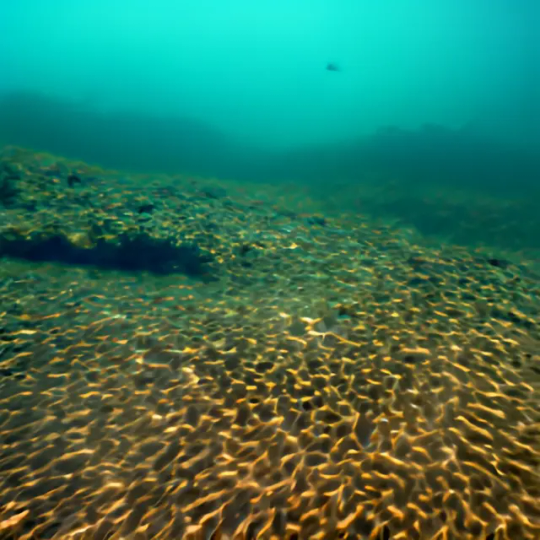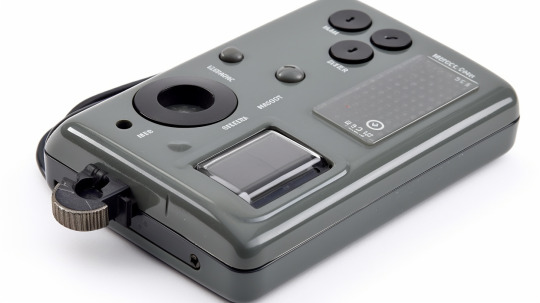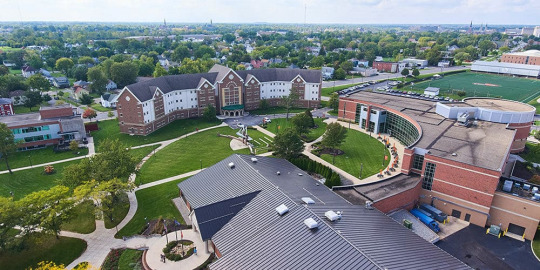#detector
Text


The Super-Kamiokande neutrino detector is a physics experiment the size of a 15-story building buried under a mountain in Japan. The detector is full of ultra-pure water, which can leach the nutrients out of your hair and dissolve metal.
The quote in the original post has nothing to do with reality. I have just impetuously passed it on. Of course, the ultra-pure water also needs reagents, abrasive particles, and probably sulfuric acid.
4K notes
·
View notes
Photo

Drug Detector Extraordinaire (Anime: Clannad AfterStory) , Meme by Weeblmao.com
#AfterStory#anime#Animememe#Animememes#Animeme#Animemes#Clannad#Detector#drug#Extraordinaire#GoodAnimeme#GoodAnimemes
7 notes
·
View notes
Link
For your special NORDVPN discount and risk free 30 Day Money back guarantee, visit www.nordvpn.com/stuartgary and use the code STUARTGARY at checkout. Get your online privacy under control with the best in the business.
The Space, Astronomy & Science Podcast.
SpaceTime Series 27 Episode 33
*The Black Hole that Ripped Apart a Star
In a cosmic display of destruction, astronomers have witnessed the closest recorded incident of a star being devoured by a supermassive black hole. The event, spotted in galaxy NGC 3799, was observed in visible light, offering unprecedented insights into these violent phenomena. The tidal disruption event, now cataloged as Assassin 23 BD, emitted less energy and faded more rapidly than typical cases, placing it in a unique classification and suggesting such occurrences may be more common than once thought.
*Hunting New Physics in Neutron Star Wrecks
The cataclysmic mergers of neutron stars could be hiding secrets of new physics, with potential clues about the enigmatic dark matter. The historic GW170817 collision, which sent ripples through space-time, has now been used to constrain theories on axion-like particles. These elusive entities could be part of the dark matter puzzle, and their traces might be detectable in future neutron star mergers, offering a new window into the fundamental workings of the universe.
*Guardian Gas Giants and Their Terrestrial Charges
A new study suggests that Earth-like planets often come with Jupiter-like protectors. Simulations of planetary systems show that "dry" super-Earths and distant "cold" Jupiters frequently coexist, with the gas giants acting as cosmic shields. This relationship hints at a formation pattern where massive protoplanetary disks give rise to both rocky worlds and their gaseous sentinels, providing a glimpse into the architecture of alien solar systems.
*China's Moonwalk Ambitions by 2030
China has set its sights on the Moon, with plans to land taikonauts on the lunar surface before the end of the decade. The ambitious project involves the development of the Long March 10 rocket, a new spacecraft, and a lunar lander. In a two-launch scenario, the vehicles will rendezvous in lunar orbit, setting the stage for China's historic manned moon landing and furthering their collaboration with Russia on a lunar base.
Plus, we examine the latest space news, delve into the science of extreme heat and preterm births, and explore the mystery of microplastics in human arteries.
For more SpaceTime and to support the show, visit our website at https://spacetimewithstuartgary.com where you can access our universal listen link, find show notes, and learn how to become a patron.
Listen to SpaceTime on your favorite podcast app with our universal listen link: https://spacetimewithstuartgary.com/listen and access show links via https://linktr.ee/biteszHQ
Support the show: https://www.spreaker.com/podcast/spacetime-with-stuart-gary--2458531/support
For more space and astronomy podcasts, visit our HQ at https://bitesz.com
#axion-like#black#collision#dark#detector#disruption#event#gamma#gravitational#hole#ligo#matter#neutron#particles#ray#star#supermassive#tidal#virgo#waves
2 notes
·
View notes
Text
we SUBMERGED the entire state of california!!! like and subscribe for more

#mr beast#satire#comedy#gimmick blog#uncanny valley#detector#unreality#ai generated images#missus beauty
2 notes
·
View notes
Video
youtube
MULTI GAS DETECTOR CALIBRATION
3 notes
·
View notes
Text

Detector
palette: https://lospec.com/palette-list/witching-hour
2 notes
·
View notes
Text

5 notes
·
View notes
Photo

MODEL 232.
Prebuild render.
4 notes
·
View notes
Text
Cell Phone Detector Circuit for Cell detection in Restricted Area
Cell Phone Detector is a circuit that can sense the presence of any activated cell-phone nearby and gives an indication of activated cell-phone near around of it. Basically Cell-phone detector is a Frequency Detector or a Current to Voltage Converter Circuit which catches frequencies about 0.8 - 3.0GHz (Mobile band frequencies). RL tuned circuit (Resistor–Inductor circuit) is not suitable for detecting the RF signals in GigaHertz range.

If you wanna build it, you can check out the complete tutorial here: https://circuitdigest.com/electronic-circuits/cell-phone-detector-circuit
3 notes
·
View notes
Text
A new way to detect radiation involving cheap ceramics
New Post has been published on https://thedigitalinsider.com/a-new-way-to-detect-radiation-involving-cheap-ceramics/
A new way to detect radiation involving cheap ceramics


The radiation detectors used today for applications like inspecting cargo ships for smuggled nuclear materials are expensive and cannot operate in harsh environments, among other disadvantages. Now, in work funded largely by the U.S. Department of Homeland Security with early support from the U.S. Department of Energy, MIT engineers have demonstrated a fundamentally new way to detect radiation that could allow much cheaper detectors and a plethora of new applications.
They are working with Radiation Monitoring Devices, a company in Watertown, Massachusetts, to transfer the research as quickly as possible into detector products.
In a 2022 paper in Nature Materials, many of the same engineers reported for the first time how ultraviolet light can significantly improve the performance of fuel cells and other devices based on the movement of charged atoms, rather than those atoms’ constituent electrons.
In the current work, published recently in Advanced Materials, the team shows that the same concept can be extended to a new application: the detection of gamma rays emitted by the radioactive decay of nuclear materials.
“Our approach involves materials and mechanisms very different than those in presently used detectors, with potentially enormous benefits in terms of reduced cost, ability to operate under harsh conditions, and simplified processing,” says Harry L. Tuller, the R.P. Simmons Professor of Ceramics and Electronic Materials in MIT’s Department of Materials Science and Engineering (DMSE).
Tuller leads the work with key collaborators Jennifer L. M. Rupp, a former associate professor of materials science and engineering at MIT who is now a professor of electrochemical materials at Technical University Munich in Germany, and Ju Li, the Battelle Energy Alliance Professor in Nuclear Engineering and a professor of materials science and engineering. All are also affiliated with MIT’s Materials Research Laboratory
“After learning the Nature Materials work, I realized the same underlying principle should work for gamma-ray detection — in fact, may work even better than [UV] light because gamma rays are more penetrating — and proposed some experiments to Harry and Jennifer,” says Li.
Says Rupp, “Employing shorter-range gamma rays enable [us] to extend the opto-ionic to a radio-ionic effect by modulating ionic carriers and defects at material interfaces by photogenerated electronic ones.”
Other authors of the Advanced Materials paper are first author Thomas Defferriere, a DMSE postdoc, and Ahmed Sami Helal, a postdoc in MIT’s Department of Nuclear Science and Engineering.
Modifying barriers
Charge can be carried through a material in different ways. We are most familiar with the charge that is carried by the electrons that help make up an atom. Common applications include solar cells. But there are many devices — like fuel cells and lithium batteries — that depend on the motion of the charged atoms, or ions, themselves rather than just their electrons.
The materials behind applications based on the movement of ions, known as solid electrolytes, are ceramics. Ceramics, in turn, are composed of tiny crystallite grains that are compacted and fired at high temperatures to form a dense structure. The problem is that ions traveling through the material are often stymied at the boundaries between the grains.
In their 2022 paper, the MIT team showed that ultraviolet (UV) light shone on a solid electrolyte essentially causes electronic perturbations at the grain boundaries that ultimately lower the barrier that ions encounter at those boundaries. The result: “We were able to enhance the flow of the ions by a factor of three,” says Tuller, making for a much more efficient system.
Vast potential
At the time, the team was excited about the potential of applying what they’d found to different systems. In the 2022 work, the team used UV light, which is quickly absorbed very near the surface of a material. As a result, that specific technique is only effective in thin films of materials. (Fortunately, many applications of solid electrolytes involve thin films.)
Light can be thought of as particles — photons — with different wavelengths and energies. These range from very low-energy radio waves to the very high-energy gamma rays emitted by the radioactive decay of nuclear materials. Visible light — and UV light — are of intermediate energies, and fit between the two extremes.
The MIT technique reported in 2022 worked with UV light. Would it work with other wavelengths of light, potentially opening up new applications? Yes, the team found. In the current paper they show that gamma rays also modify the grain boundaries resulting in a faster flow of ions that, in turn, can be easily detected. And because the high-energy gamma rays penetrate much more deeply than UV light, “this extends the work to inexpensive bulk ceramics in addition to thin films,” says Tuller. It also allows a new application: an alternative approach to detecting nuclear materials.
Today’s state-of-the-art radiation detectors depend on a completely different mechanism than the one identified in the MIT work. They rely on signals derived from electrons and their counterparts, holes, rather than ions. But these electronic charge carriers must move comparatively great distances to the electrodes that “capture” them to create a signal. And along the way, they can be easily lost as they, for example, hit imperfections in a material. That’s why today’s detectors are made with extremely pure single crystals of material that allow an unimpeded path. They can be made with only certain materials and are difficult to process, making them expensive and hard to scale into large devices.
Using imperfections
In contrast, the new technique works because of the imperfections — grains — in the material. “The difference is that we rely on ionic currents being modulated at grain boundaries versus the state-of-the-art that relies on collecting electronic carriers from long distances,” Defferriere says.
Says Rupp, “It is remarkable that the bulk ‘grains’ of the ceramic materials tested revealed high stabilities of the chemistry and structure towards gamma rays, and solely the grain boundary regions reacted in charge redistribution of majority and minority carriers and defects.”
Comments Li, “This radiation-ionic effect is distinct from the conventional mechanisms for radiation detection where electrons or photons are collected. Here, the ionic current is being collected.”
Igor Lubomirsky, a professor in the Department of Materials and Interfaces at the Weizmann Institute of Science, Israel, who was not involved in the current work, says, “I found the approach followed by the MIT group in utilizing polycrystalline oxygen ion conductors very fruitful given the [materials’] promise for providing reliable operation under irradiation under the harsh conditions expected in nuclear reactors where such detectors often suffer from fatigue and aging. [They also] benefit from much-reduced fabrication costs.”
As a result, the MIT engineers are hopeful that their work could result in new, less expensive detectors. For example, they envision trucks loaded with cargo from container ships driving through a structure that has detectors on both sides as they leave a port. “Ideally, you’d have either an array of detectors or a very large detector, and that’s where [today’s detectors] really don’t scale very well,” Tuller says.
Another potential application involves accessing geothermal energy, or the extreme heat below our feet that is being explored as a carbon-free alternative to fossil fuels. Ceramic sensors at the ends of drill bits could detect pockets of heat — radiation — to drill toward. Ceramics can easily withstand extreme temperatures of more than 800 degrees Fahrenheit and the extreme pressures found deep below the Earth’s surface.
The team is excited about additional applications for their work. “This was a demonstration of principle with just one material,” says Tuller, “but there are thousands of other materials good at conducting ions.”
Concludes Defferriere: “It’s the start of a journey on the development of the technology, so there’s a lot to do and a lot to discover.”
This work is currently supported by the U.S. Department of Homeland Security, Countering Weapons of Mass Destruction Office. This support does not constitute an express or implied endorsement on the part of the government. It was also funded by the U.S. Defense Threat Reduction Agency.
#2022#advanced materials#aging#applications#approach#Art#atom#atoms#barrier#batteries#Capture#carbon#Cells#ceramics#chemistry#conductors#container#crystals#defense#Department of Energy (DoE)#detection#detector#development#devices#DMSE#earth#electrochemical#electrodes#electrolyte#electrolytes
0 notes
Link
Best Website Builder Detector Tools
0 notes
Text

فلزیاب ایمپکت | Impact
تولید کشور ترکیه
ساخت شرکت نوکتا ماکرو (Nokta Makro)
در دو نسخه ایمپکت و ایمپکت پرو
حداکثر عمق کاوش 1.5 متر
قابلیت تشخیص سکه در عمق 45 سانتی متر
دارای ۱۲ حالت جستجو
قابلیت حذف ذرات تا 80%
قابلیت تفکیک فلزات
امکان تنظیم در 3 فرکانس 5، 14 و 20 کیلوهرتز
امکان بالانس به صورت دستی و اتوماتیک
دارای لوپ استاندارد 7 و 7.5 اینچی دابل و ضدآب
4 عدد باتری قلمی AA با قابلیت شارژ از طریق Usb
وزن دستگاه حدود 1.7 الی 2 کیلوگرم
دارای سیستم ویبره در هنگام تشخیص هدف
قابلیت آپدیت آنلاین نرم افزار
__________________________________________________________
برای استعلام قیمت و موجودی تماس بگیرید.09054565695
فلزیاب توران بزرگترین مرجع خرید و فروش فلزیاب
انواع فلزیاب اورجینال با بهترین قیمت
تست و آموزش رایگان همراه با یکسال گارانتی
www.felezyabturan.com
1 note
·
View note
Text
Fluorescence Microscope

A fluorescence microscope is an advanced optical instrument used in scientific research, medical diagnostics, and various other fields to observe and analyze specimens with fluorescence properties. Infinite optical system.
0 notes
Text

Portable Explosives Detector is a lightweight, user-friendly detector with a 99% detection rate. It is integrated with a 5-inch touchscreen display and power lock option.
Our detector is capable of detecting nanogram levels of explosives in test samples within less than 5 seconds. Incorporated a built-in diagnosis function and audio-visual
alert system.
0 notes
Text
Top Security Tips for an Open Campus

An open campus, whether it's a university, college, or school, presents unique security challenges due to its accessibility to students, faculty, staff, and visitors. Implementing effective security measures is essential to ensure the safety and well-being of everyone on campus. Here are some top security tips for maintaining a secure environment in an open campus setting:
1. Comprehensive Access Control: Implement access control measures to regulate entry and exit points across the campus. This can include the use of ID cards, access badges, or biometric systems to restrict access to authorized individuals only. Consider installing gates, turnstiles, or security barriers at key entry points to monitor and control pedestrian and vehicular traffic.
2. Surveillance Cameras and Monitoring: Deploy a network of surveillance cameras strategically throughout the campus to provide comprehensive coverage of key areas such as entrances, parking lots, common areas, and campus grounds. Ensure that cameras are regularly monitored by security personnel or through a centralized monitoring system to detect and respond to security incidents in real-time.
3. Emergency Communication Systems: Install emergency communication systems, such as loudspeakers, emergency call boxes, and digital signage, to disseminate critical information and alerts during emergencies or security incidents. These systems enable quick communication with students, faculty, and staff and help facilitate an effective response to emergencies such as natural disasters, fires, or active threats.
4. Campus Lighting and Visibility: Maintain adequate lighting across the campus, especially in parking lots, walkways, and other outdoor areas, to enhance visibility and deter criminal activity. Consider installing motion-activated lights and security lighting to illuminate dark areas during nighttime hours. Well-lit environments contribute to a sense of safety and security for individuals on campus.
5. Security Patrols and Presence: Establish a visible security presence on campus through regular patrols by security officers or campus police. Security patrols help deter criminal activity, provide assistance to students and visitors, and respond promptly to security concerns or incidents. Consider implementing foot patrols, bicycle patrols, or vehicle patrols to cover different areas of the campus effectively.
6. Security Awareness and Training: Promote security awareness and provide training to students, faculty, and staff on campus security protocols, emergency procedures, and personal safety tips. Conduct regular drills and exercises to ensure that individuals know how to respond appropriately during emergencies or security incidents. Encourage the reporting of suspicious behavior or concerns to campus authorities.
7. Collaborative Partnerships: Foster collaborative partnerships with local law enforcement agencies, emergency responders, and community organizations to enhance campus security and emergency preparedness efforts. Establish communication channels for sharing information, coordinating responses, and addressing mutual security concerns effectively.
8. Regular Security Assessments and Updates: Conduct regular security assessments and audits to identify vulnerabilities, assess risks, and implement necessary security enhancements or updates. Stay informed about emerging security threats, trends, and best practices in campus security to adapt and improve security measures accordingly.
By implementing these top security tips, an open campus can create a safe and secure environment for students, faculty, staff, and visitors alike. The education industry is a big focus here at Cove Smart. We believe every student and faculty member should feel safe while on campus. If you would like to learn more about the security solutions we provide and how we integrate them within a school system, feel free to contact us today.
0 notes